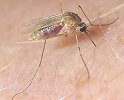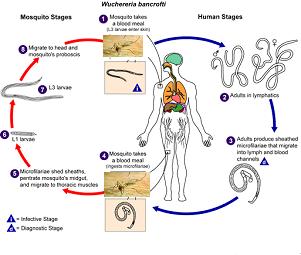Host interactions
W. Bancrofti is a parasitic worm. Its interactions are with humans and mosquitoes. Mosquitoes are the intermediate hosts, and humans are the definitive hosts. The microfilariae inhabit the mosquito, and then the mosquito transfers the parasite to humans when it takes a blood meal.
One of the more common mosquito vectors of W. Bancrofti is the Culex mosquito. Two other common vectors are the Anopheles and the Aedes mosquitoes. Humans are the definitive hosts of the parasite.

Wuchereria bancrofti carry out their life cycle in two hosts. The intermediate hosts are mosquitoes, and the definitive hosts are human beings. In humans, the adults infest the lymphatics. The Wuchereria bancrofti life cycle consists of several steps. The first stage larvae are called microfilariae. The microfilaria migrate between the deep and the peripheral circulation. The worm is then transferred to mosquitoes. Inside the mosquitoes, the worm matures into motile larvae. When the mosquito takes a blood meal from a human, the worm is ejected into the human blood stream. The larvae then moves to the lymph nodes and over the course of a year, develops into an adult worm.
